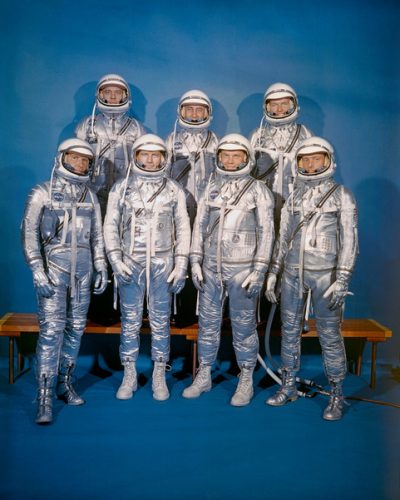As the string ensemble emerges, we’re treated to familiar footage: the shadow of the lunar module gliding across the pockmarked surface of the moon, men in white button-downs with eyes glued to the consoles in front of them, and finally, the landing and first steps. This time, a woman’s voice crackles over the radio, and you’re forced ask—why weren’t the first people in space women? Mercury 13 is a 2018 Netflix documentary that demands an answer to that question.
The story kicks off at the beginning of NASA’s manned spaceflight program in 1958. NASA appointed a physician, Dr. Lovelace, to create and administer physical and mental tests on aspiring astronauts. Lovelace felt that woman had a definite role in space, so with encouragement from Jackie Cochran, a close friend and pioneer for women in aviation, he decided to recruit 25 outstanding female pilots to undergo the same astronaut tests administered to men for his own Women in Space program. This testing involved injections of 10-degree water in recruits’ ears, tube-swallowing, x-rays, and hours in sensory deprivation tanks. Thirteen women passed the first phase of testing with flying colors. Officially called First Lady Astronaut Trainees, they came to be known as the Mercury 13.
Before testing could continue, however, they were stopped by NASA. The program was over. But of course, the future of women in space was not. Decades later, at the launch of Discovery’s STS-63 mission in 1995, the first female space shuttle pilot, Eileen Collins, took the microphone and told the entire launchpad at Cape Canaveral, “If it were not for the Mercury 13, I would not be here today.” Before a montage showing women on board the International Space Station, we get the best shot of the documentary: footage of the surviving members of the Mercury 13 clapping, crying, and grinning, elated, as Discovery roars into the sky.
The ending of Mercury 13 leaves you misty-eyed and hopeful, like most stories about progress. However, the documentary chose to tell a very specific narrative. Sally Ride and Mae Jemison, both historic “firsts” in the story of women in space, are never mentioned by name, possibly because neither was a pilot; Mercury 13 is the story of thirteen female aviators, but given the focus on how the thirteen impacted the future of women in space, these omissions seem odd. Perhaps the documentary could have done away with some of the footage of planes and spent more time on the history of female astronauts between the Mercury 13 and Eileen Collins. They could have expanded their history of women in aviation by exploring the roles women of color, such as Bessie Coleman, played in the development of the field during the mid-19th century. Aside from these missteps, Mercury 13’s bittersweet story still resonates today as STEM fields struggle to welcome individuals they have excluded for ages.

